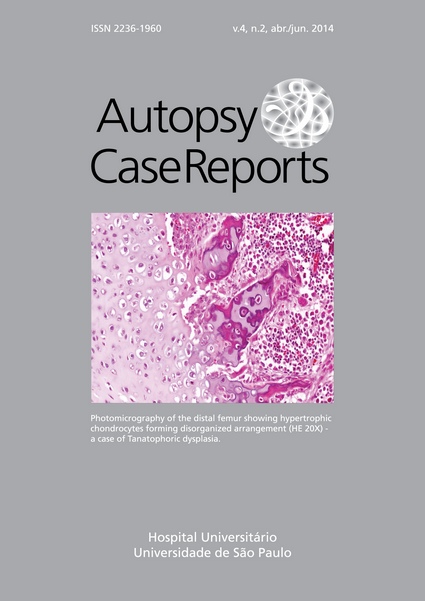Takotsubo cardiomyopathy: an overlooked cause of chest pain
DOI:
https://doi.org/10.4322/acr.%25y.82537Keywords:
Takotsubo Cardiomyopathy, Ventricular Dysfunction, Left, Heart Failure, CatecholaminesAbstract
Takotsubo cardiomyopathy (TTC), also known as apical ballooning syndrome, broken heart syndrome, or stress-induced cardiomyopathy, is defined as a transient disturbance of the left ventricle, which is quite often associated with electrocardiographic abnormalities that may mimic acute myocardial infarction. The syndrome is also characterized by a mild alteration of cardiac biomarkers in absence of coronary blood flow obstruction on the coronariography. Clinical presentation is often manifested by angina, dyspnea, syncope, and arrhythmias. Peculiarly, the left ventricle takes the form of “tako-tsubo” (a Japanese word for “octopus trap”) on the imaging workup. The authors report the case of a post-menopausal, hypertensive, dyslipidemic and type-II diabetic woman admitted at the emergency service with acute chest pain post physical exertion. Electrocardiogram showed signs of ischemia and myocardial necrosis markers were mildly increased. Echocardiography and ventriculography showed apical and mid-ventricular akinesia, with mild atherosclerotic coronary lesions. Thus diagnostic workup and the outcome followed the diagnostic criteria for TTC. The authors called attention to the potential of overlooking this diagnosis, since this syndrome is still not widely recognized.Downloads
Downloads
Published
2014-06-26
Issue
Section
Article / Clinical Case Report
License
Copyright
Authors of articles published by Autopsy and Case Report retain the copyright of their work without restrictions, licensing it under the Creative Commons Attribution License - CC-BY, which allows articles to be re-used and re-distributed without restriction, as long as the original work is correctly cited.
How to Cite
Bermudes, L. H., Tomazelli, B., Furieri, N. P., Coelho, R. A., & Lima, C. F. de. (2014). Takotsubo cardiomyopathy: an overlooked cause of chest pain. Autopsy and Case Reports, 4(2), 61-67. https://doi.org/10.4322/acr.%y.82537



